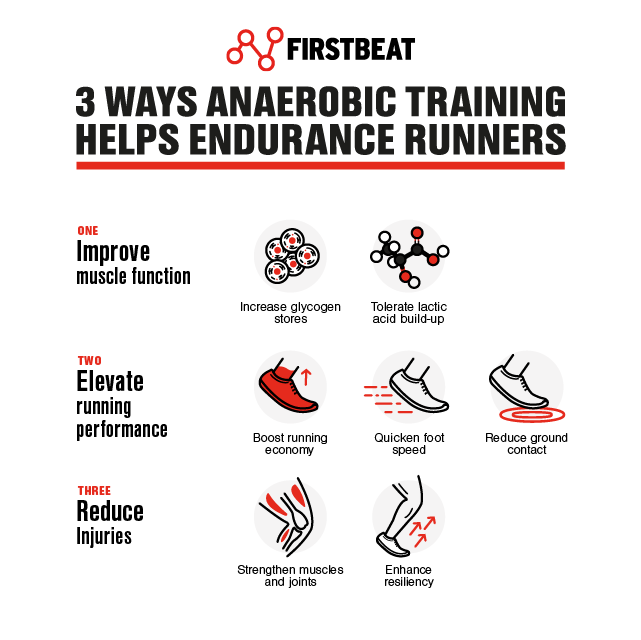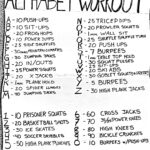To increase aerobic capacity, incorporate regular cardiovascular exercises like running, cycling, or swimming. Maintain a consistent workout routine and gradually increase intensity.
Aerobic capacity, also known as VO2 max, is crucial for overall fitness and endurance. It represents the maximum amount of oxygen your body can utilize during intense exercise. Enhancing this capacity enables you to perform physical activities more efficiently. Regular cardiovascular exercises, such as running, swimming, or cycling, can significantly boost your aerobic capacity.
Consistency is key; aim to exercise several times a week, progressively increasing the duration and intensity. Complement your routine with proper nutrition and adequate rest for optimal results. Building aerobic capacity not only improves physical performance but also contributes to better cardiovascular health and overall well-being.

Credit: veloforte.com
Importance Of Aerobic Capacity
Aerobic capacity is vital for overall well-being. It measures how well your body uses oxygen. High aerobic capacity means better endurance and health. It affects daily activities and sports performance. Understanding its importance can motivate you to improve it.
Benefits For Health
Improving aerobic capacity offers numerous health benefits:
- Enhanced heart health and reduced risk of heart disease
- Better lung function and increased oxygen intake
- Lower blood pressure and cholesterol levels
- Improved mental health and reduced stress levels
- Increased energy levels and reduced fatigue
Impact On Performance
Higher aerobic capacity significantly impacts physical performance. Here are some key points:
| Aspect | Impact |
|---|---|
| Endurance | Longer exercise duration without fatigue |
| Speed | Ability to maintain higher speeds longer |
| Recovery | Faster recovery between exercises |
| Overall Performance | Improved efficiency in various sports |

Credit: www.firstbeat.com
Setting Realistic Goals
Setting realistic goals is crucial for increasing aerobic capacity. It helps to stay motivated and track progress. Breaking goals into short-term and long-term can make them more achievable.
Short-term Goals
Short-term goals are small, manageable tasks. They provide quick wins and keep you motivated.
- Start with walking: Walk for 20 minutes each day. Gradually increase the time.
- Track your progress: Use a journal or app. Record your daily activities.
- Set weekly targets: Aim to walk for 30 minutes by week two.
Long-term Goals
Long-term goals require more time and commitment. They help you achieve significant improvements.
- Run a 5K: Train for a 5K run in six months.
- Increase workout intensity: Add interval training to your routine within three months.
- Join a fitness class: Commit to attending a class twice a week for a year.
| Goal Type | Example | Timeline |
|---|---|---|
| Short-term | Walk 20 minutes daily | 1 week |
| Long-term | Run a 5K | 6 months |
Setting both short-term and long-term goals helps in increasing aerobic capacity efficiently. Keep your goals specific, measurable, and time-bound.
Effective Training Methods
Improving aerobic capacity helps boost your endurance and heart health. Effective training methods are key to achieving this goal. This section covers two powerful techniques: Interval Training and Steady-State Cardio.
Interval Training
Interval Training involves alternating between high and low-intensity exercises. This method pushes your body to adapt quickly. It combines short bursts of intense activity with periods of rest or low-intensity exercise.
- High-Intensity Interval Training (HIIT): Short, intense workouts that burn calories fast.
- Tabata Training: 20 seconds of work, followed by 10 seconds of rest, repeated eight times.
Benefits of Interval Training include:
- Increased metabolic rate
- Improved cardiovascular health
- Faster fat loss
Steady-state Cardio
Steady-State Cardio involves maintaining a constant, moderate level of intensity. This type of exercise is performed over a longer period.
- Running: Jog at a steady pace for 30-60 minutes.
- Cycling: Ride at a consistent speed for 45-60 minutes.
- Swimming: Swim laps at a steady pace for 30-60 minutes.
Benefits of Steady-State Cardio include:
- Improved endurance
- Lower risk of injury
- Better mental focus
| Method | Intensity | Duration |
|---|---|---|
| Interval Training | High/Low | 20-30 minutes |
| Steady-State Cardio | Moderate | 30-60 minutes |
Both methods are effective. Choose one that suits your goals and lifestyle.

Credit: frontrunnersports.com.au
Optimizing Your Diet
Optimizing your diet can significantly enhance your aerobic capacity. A well-balanced diet ensures your body gets the nutrients it needs to perform optimally. This section will explore macronutrient balance and hydration strategies to help you reach your aerobic goals.
Macronutrient Balance
A balanced diet includes the right mix of carbohydrates, proteins, and fats. Carbohydrates provide quick energy for aerobic activities. Choose complex carbs like whole grains and vegetables. Proteins are essential for muscle repair and growth. Incorporate lean meats, beans, and nuts. Healthy fats support overall health and energy levels. Opt for avocados, olive oil, and fatty fish.
| Macronutrient | Sources |
|---|---|
| Carbohydrates | Whole grains, vegetables, fruits |
| Proteins | Lean meats, beans, nuts |
| Fats | Avocados, olive oil, fatty fish |
Hydration Strategies
Staying hydrated is crucial for maintaining aerobic performance. Water regulates body temperature and transports nutrients. Drink water throughout the day, not just during exercise. Aim for at least 8 cups of water daily. Sports drinks can replenish electrolytes after intense workouts. Be mindful of the sugar content in sports drinks.
- Drink water regularly
- Aim for 8 cups daily
- Use sports drinks for electrolyte replenishment
Proper hydration and a balanced diet are key to improving your aerobic capacity. Implement these strategies to see significant improvements in your performance.
Incorporating Strength Training
Strength training is often overlooked in aerobic exercises. Yet, it plays a crucial role in increasing aerobic capacity. Incorporating strength training can improve endurance and overall performance.
Benefits For Endurance
Strength training enhances muscle efficiency. This means your muscles can work longer without getting tired. It also helps in increasing your VO2 max, which is the maximum amount of oxygen your body can use during intense exercise.
By building stronger muscles, you reduce the risk of injuries. Stronger muscles support your joints better, making them more resilient to stress. This allows you to train more consistently without setbacks.
Another significant benefit is improved metabolic rate. With increased muscle mass, your body burns more calories even at rest. This helps you maintain a healthy weight, which is crucial for endurance sports.
Sample Exercises
Here are some strength training exercises that can boost your aerobic capacity:
- Squats: Build leg strength and enhance your running performance.
- Lunges: Improve balance and strengthen your lower body.
- Deadlifts: Strengthen your back and core muscles.
- Push-Ups: Work on your chest, shoulders, and triceps.
- Planks: Strengthen your core for better stability and endurance.
Here’s a simple weekly routine to get started:
| Day | Exercise | Reps/Sets |
|---|---|---|
| Monday | Squats | 3 sets of 12 reps |
| Wednesday | Push-Ups | 3 sets of 15 reps |
| Friday | Deadlifts | 3 sets of 10 reps |
| Saturday | Planks | 3 sets of 1 minute |
Incorporating these exercises into your routine can lead to significant improvements. You will notice better endurance and overall performance.
Monitoring Progress
Monitoring your progress is key to increasing aerobic capacity. By tracking your improvements, you can make necessary adjustments and stay motivated. Here’s how to do it effectively.
Tracking Tools
Use the right tools to track your progress accurately. There are many options available:
- Heart Rate Monitors: Measure your heart rate during workouts. Helps ensure you are working in the correct zone.
- Fitness Apps: Track distance, time, and intensity. Many apps also provide progress reports.
- Wearable Devices: Devices like smartwatches track steps, calories, and heart rate.
- Training Logs: Keep a log of your workouts. Note down the duration, intensity, and how you felt.
Adjusting Your Plan
Adjust your training plan based on your tracked data. Here’s how:
- Review Your Data: Look at your heart rate, distance, and time. Identify patterns or plateaus.
- Set New Goals: Based on your data, set achievable new goals. This keeps you motivated and challenged.
- Modify Intensity: Increase or decrease workout intensity. Ensure you are pushing yourself but not overtraining.
- Incorporate Variety: Add different types of aerobic exercises. This keeps your routine interesting and effective.
Here’s a simple table to illustrate a weekly plan adjustment:
| Day | Current Plan | Adjusted Plan |
|---|---|---|
| Monday | 30 min run | 35 min run |
| Wednesday | 45 min cycling | 50 min cycling |
| Friday | 20 min swim | 25 min swim |
Recovery Techniques
Boosting your aerobic capacity involves more than just intense workouts. Recovery techniques are crucial for improving stamina and endurance. Let’s explore how proper rest and active recovery can help.
Importance Of Rest
Rest is a key part of any fitness routine. It allows your body to repair and grow stronger. Without enough rest, your body can’t recover fully. This can lead to injuries and fatigue.
Taking regular breaks helps maintain high energy levels. It also boosts overall performance. Here’s why rest is important:
- Reduces muscle soreness
- Prevents burnout
- Improves sleep quality
- Enhances mental health
Plan rest days into your training schedule. This ensures you get the most from your workouts.
Active Recovery Methods
Active recovery involves low-intensity exercises. These help your muscles recover faster. They also keep you moving without adding stress to your body.
Here are some effective active recovery methods:
- Walking: A gentle walk boosts circulation and aids recovery.
- Swimming: Water exercises relieve muscle tension and improve flexibility.
- Yoga: Stretching poses help relax muscles and enhance blood flow.
- Cycling: Light cycling keeps your muscles active without intense strain.
These methods keep your body active. They also help in quicker recovery.
Comparison Table: Rest Vs Active Recovery
| Aspect | Rest | Active Recovery |
|---|---|---|
| Intensity | None | Low |
| Benefits | Complete muscle relaxation | Improved circulation |
| Best for | Severe fatigue | Minor soreness |
| Recommended Frequency | 1-2 times a week | After intense workouts |
Mental Strategies
Boosting your aerobic capacity is not just about physical training. Mental strategies play a crucial role. These tactics help keep you motivated and overcome plateaus. Let’s explore how mental strength can enhance your aerobic capacity.
Staying Motivated
Motivation is key to maintaining a consistent workout routine. Here are some tips to stay motivated:
- Set Realistic Goals: Break your ultimate goal into smaller, achievable milestones. This makes progress measurable and keeps you motivated.
- Track Your Progress: Use a fitness app or journal to track your workouts. Seeing your progress can boost your motivation.
- Reward Yourself: Celebrate small victories with rewards. This keeps you engaged and motivated to reach the next milestone.
- Join a Community: Being part of a fitness group can provide support and motivation. Sharing your journey with others makes it more enjoyable.
Overcoming Plateaus
Hitting a plateau can be frustrating. Use these strategies to overcome it:
- Change Your Routine: Introduce new exercises or vary the intensity. This challenges your body and helps break through the plateau.
- Set New Goals: Adjust your goals to keep them challenging. This keeps you focused and motivated to push beyond the plateau.
- Stay Positive: Maintain a positive mindset. Remember that plateaus are a natural part of progress and can be overcome.
- Rest and Recover: Ensure you get adequate rest. Overtraining can lead to plateaus, so balance your workouts with proper recovery.
By incorporating these mental strategies, you can increase your aerobic capacity effectively. Stay motivated and overcome any obstacles on your fitness journey.
Frequently Asked Questions
What Is The Fastest Way To Increase Aerobic Capacity?
High-intensity interval training (HIIT) is the fastest way to increase aerobic capacity. It alternates short bursts of intense exercise with recovery periods.
Can Aerobic Capacity Be Increased?
Yes, aerobic capacity can be increased. Regular exercise, such as running or cycling, boosts cardiovascular fitness and endurance.
What Activities Increase Aerobic Capacity?
Activities like running, swimming, cycling, and dancing increase aerobic capacity. High-intensity interval training (HIIT) also boosts cardiovascular fitness.
How Do You Achieve Maximum Aerobic Capacity?
To achieve maximum aerobic capacity, engage in regular high-intensity interval training (HIIT). Include activities like running, cycling, and swimming. Ensure consistent progress by gradually increasing workout intensity and duration. Maintain a balanced diet rich in nutrients to support energy levels and recovery.
Prioritize adequate rest and sleep.
Conclusion
Increasing aerobic capacity requires consistency, varied workouts, and proper rest. Implement these strategies to see significant improvements. Stay motivated and track your progress. Remember, patience and perseverance are key. Commit to your fitness journey, and enjoy the benefits of enhanced aerobic capacity for a healthier lifestyle.




